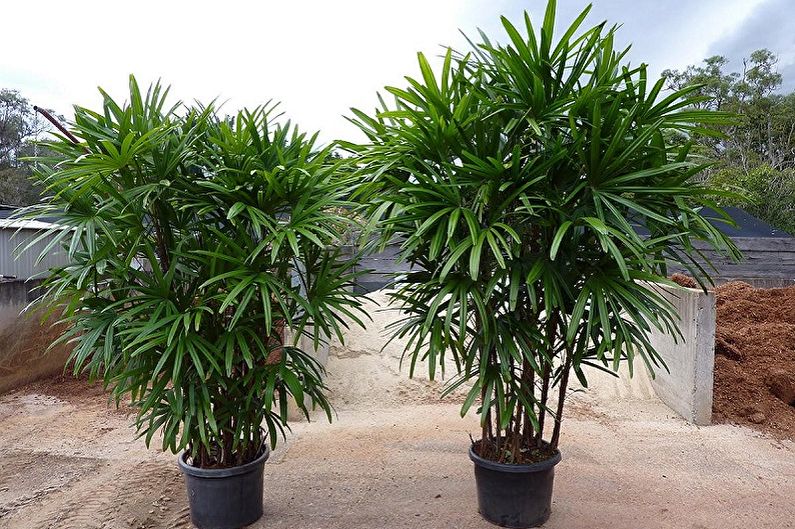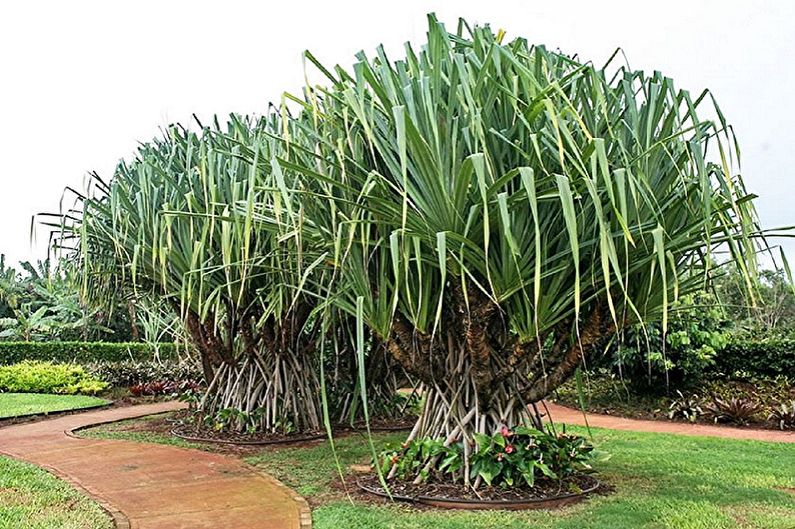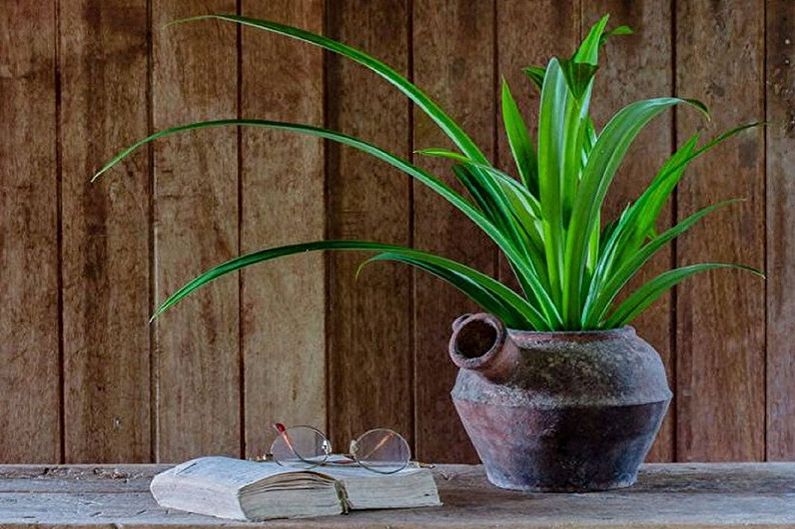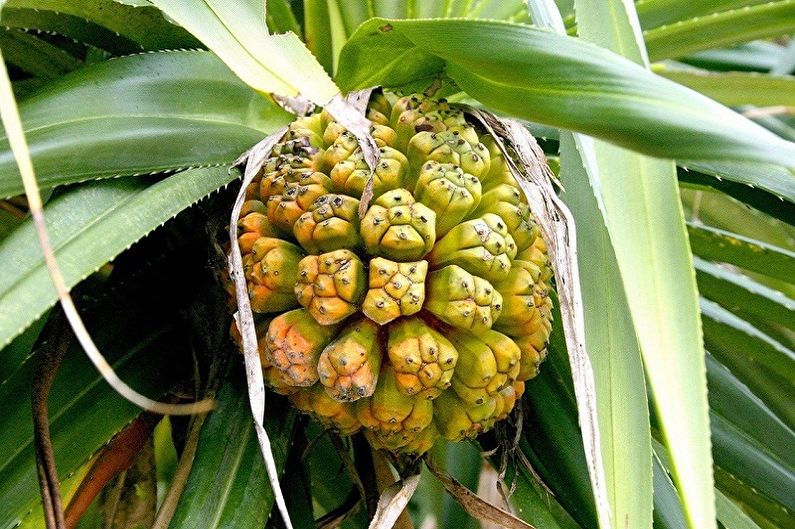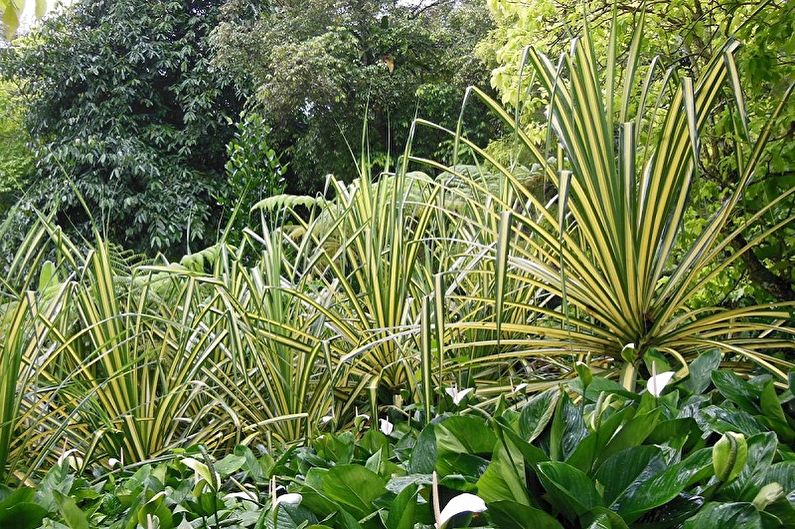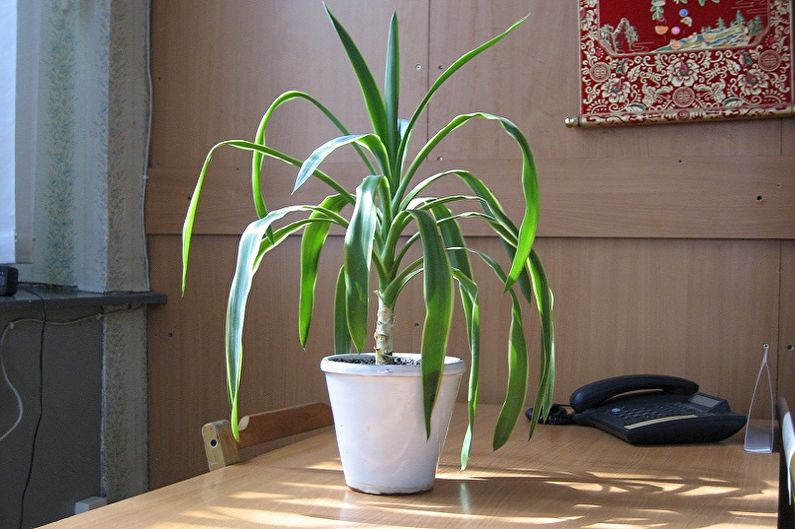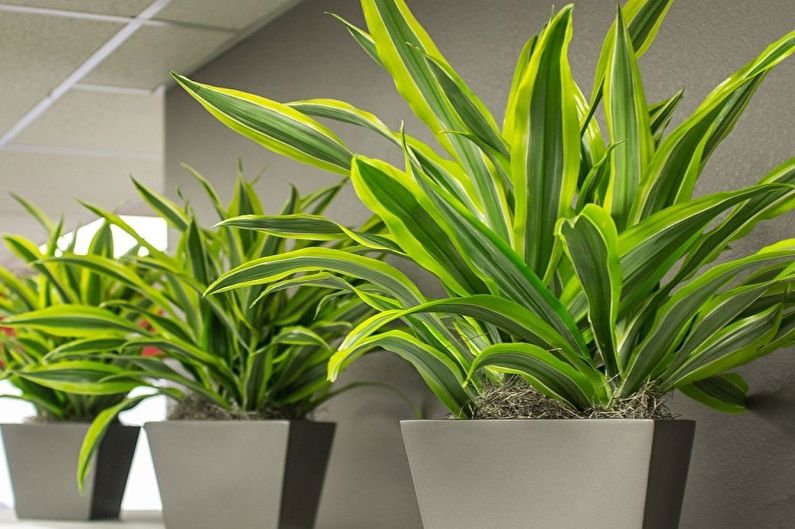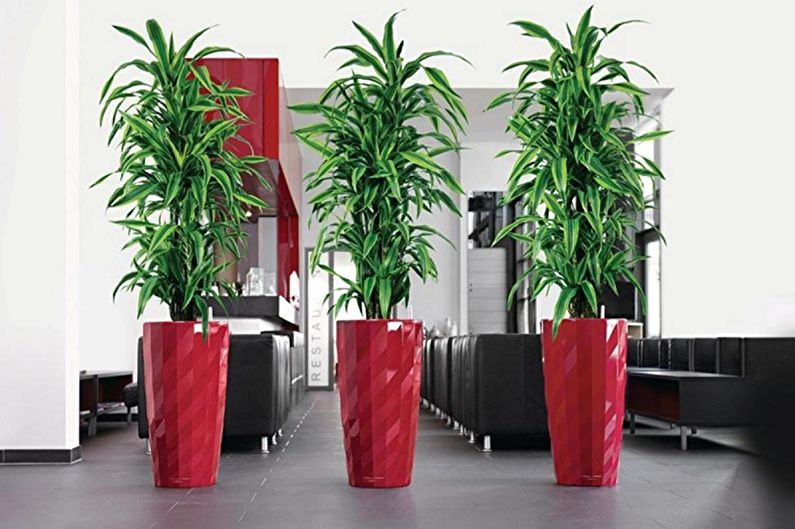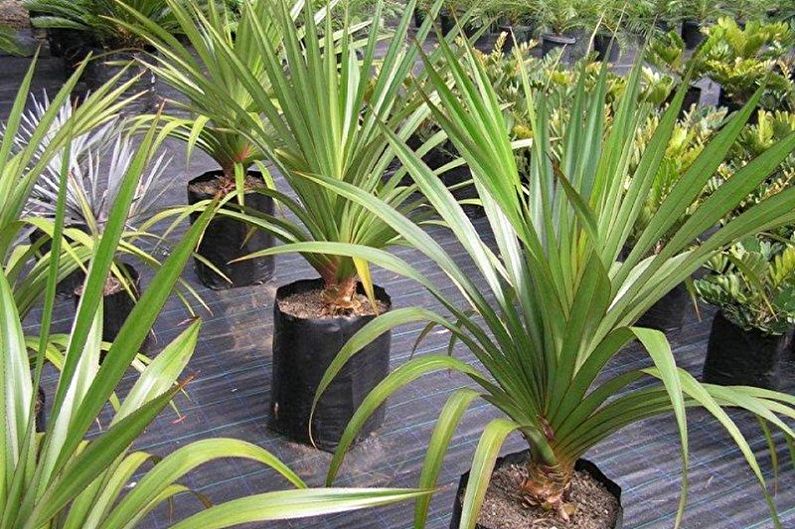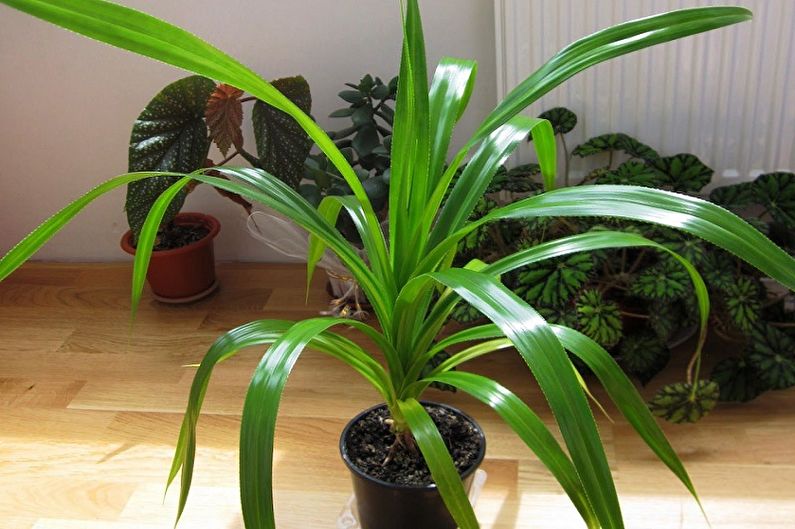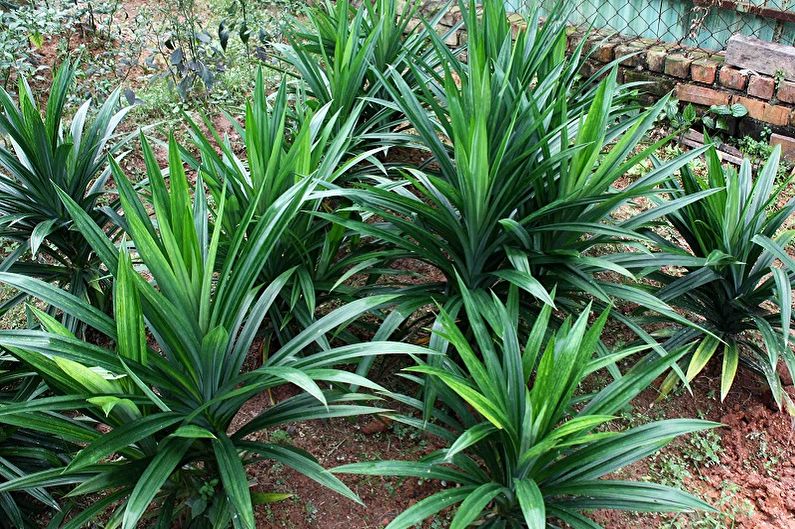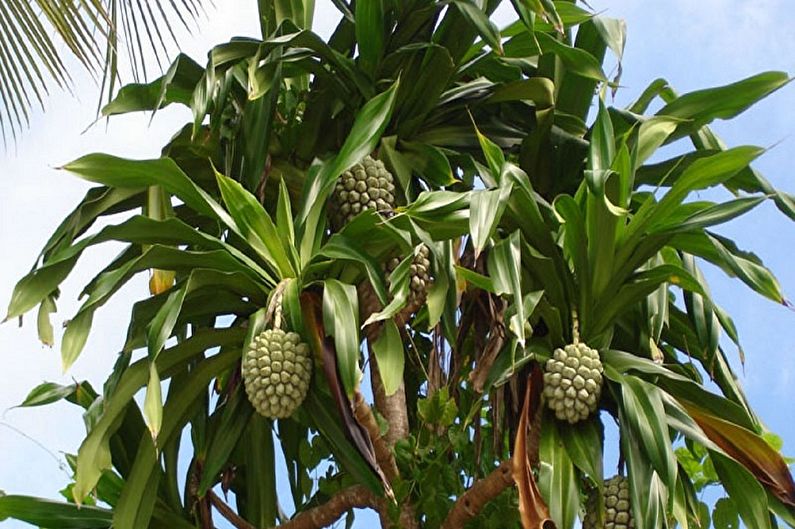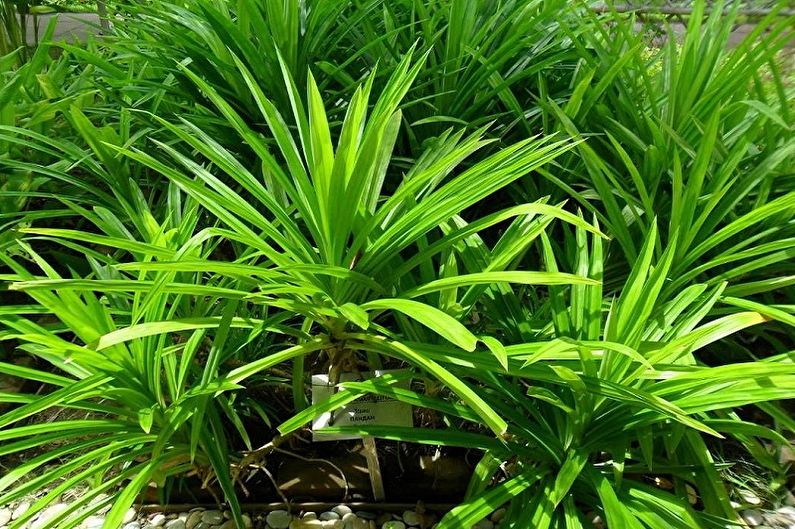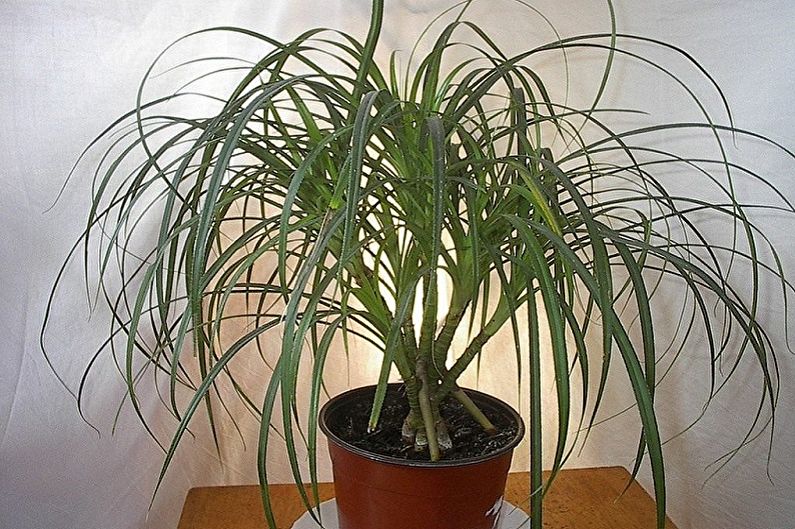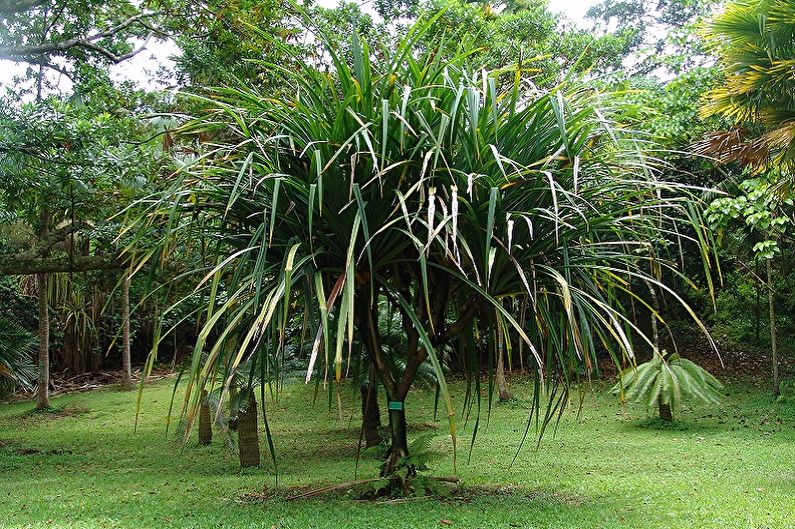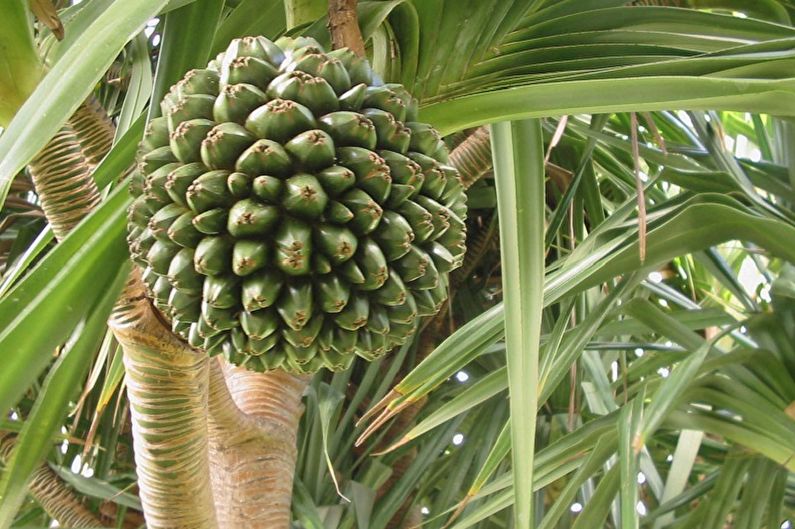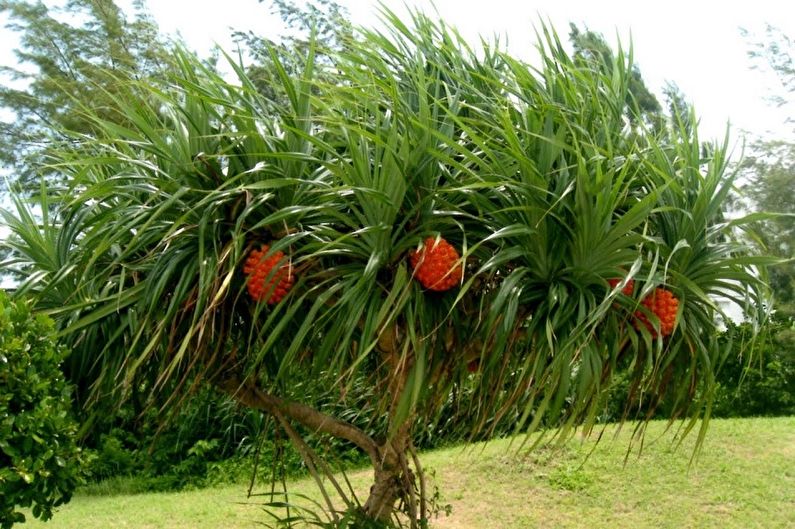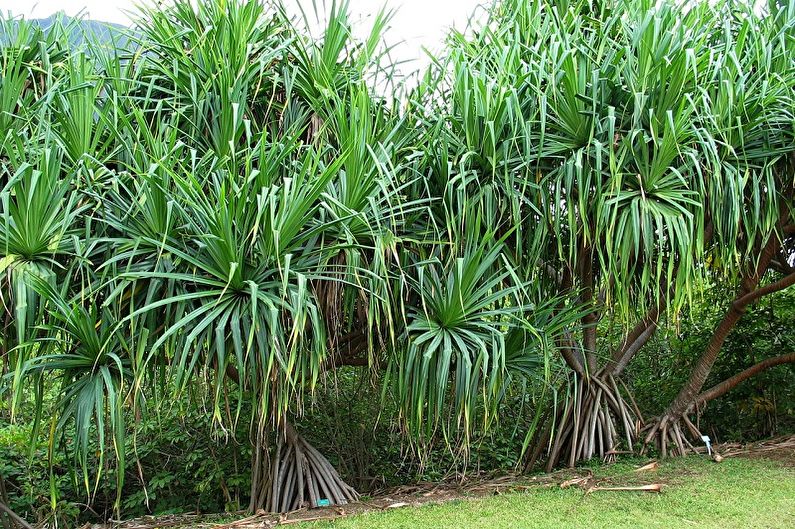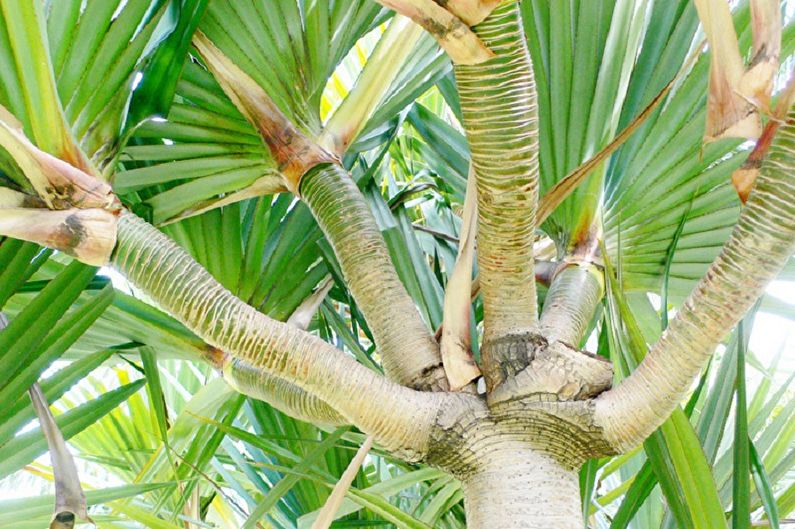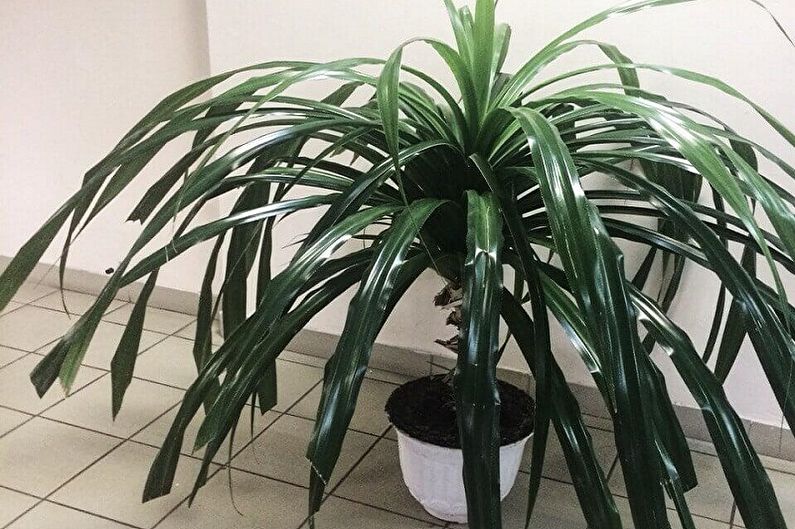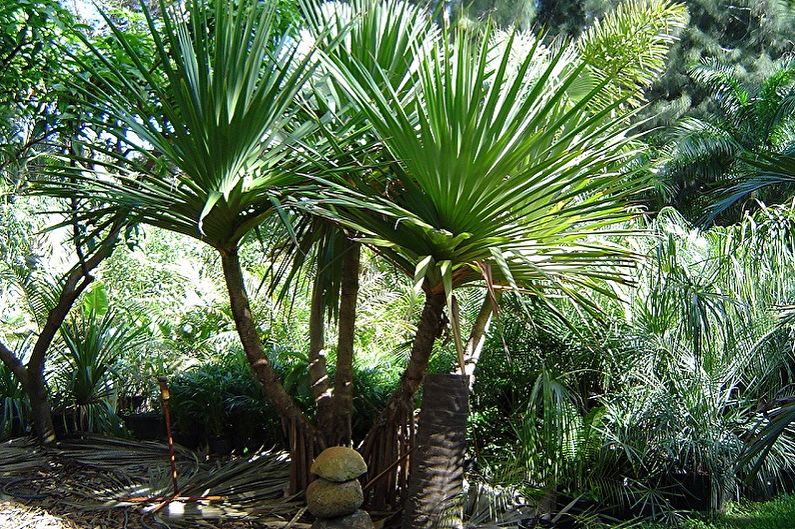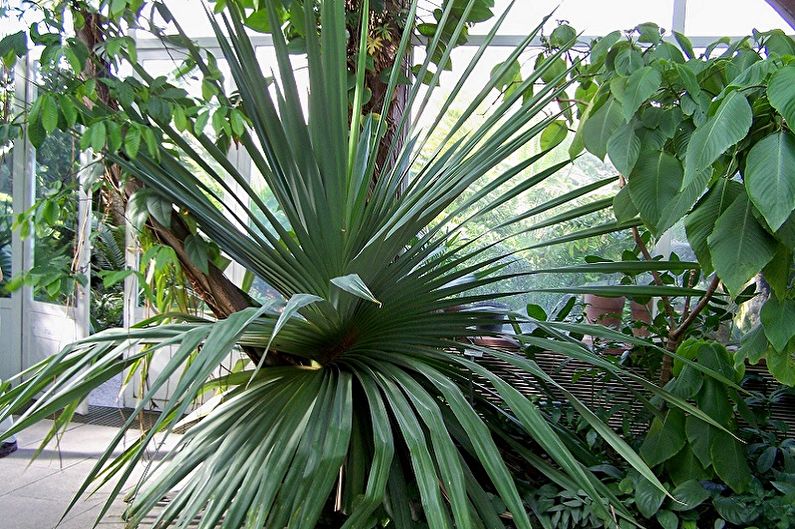
Pandanus is a rather spectacular, beautiful plant that came to us from the African tropics. The spiral-shaped arrangement of its long leaves with thorns relative to the tree axis gave a second name to the plant - a spiral-shaped palm. Under natural living conditions, the pandanus blooms annually, which, unfortunately, indoor specimens cannot boast of. After pollination, the process of formation of large edible fruits that have a pleasant sweetish aftertaste occurs. Also, pandanus is very unpretentious, which is why it gains the sympathy of beginning gardeners. It is often used to decorate not only home apartments, but also public buildings and offices.
The main types of pandanus
The total number of studied various representatives of the genus Pandanus is about six hundred species. However, the vast majority of them can grow only in their natural conditions. For cultivation at home and in household conditions, several more adaptable species are used.
Pandanus Veitch
This representative of pandanus belongs to slow-growing plants - its average growth over ten years is not more than 1.5 m, so it is great for home landscaping. This evergreen perennial has a rather short tree-like trunk. The long leaves (up to 90 cm) of the xiphoid form fit snugly to the base, from which they then diverge like a fan. The leaf plates are decorated with a whitish stripe and light brown small spikes.
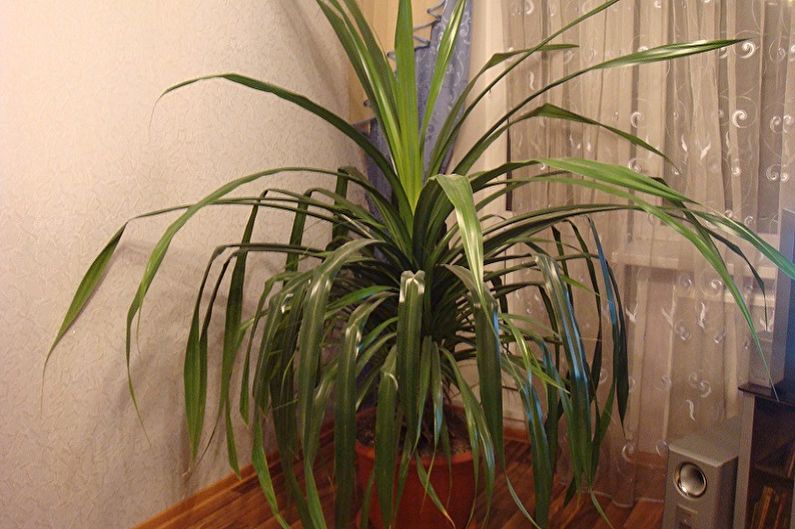
Pandanus Useful
Pretty original sprawling tree. To keep it at home, you need to choose a spacious room - a hall or a terrace, since the plant is able to gain three-meter height. The old powerful trunk has branches, the tops of which are crowned with helical crowns with drooping foliage. The leaves are very long, sometimes grow to 120 cm, while having a width of not more than 10 cm.
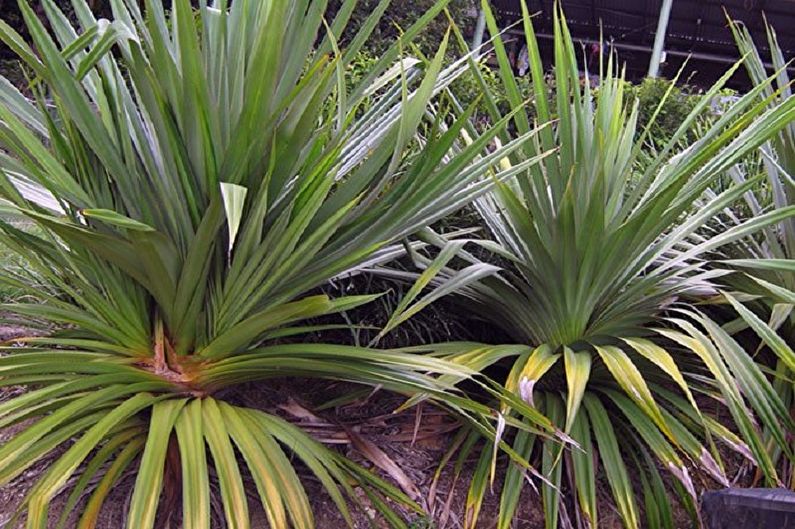
Pandanus Sandera
It is easy to recognize this species by the color of decorative leaves - narrow sunny yellow stripes are clearly visible on the saturated green plate background. The edges of the foliage have brownish-colored spikes.
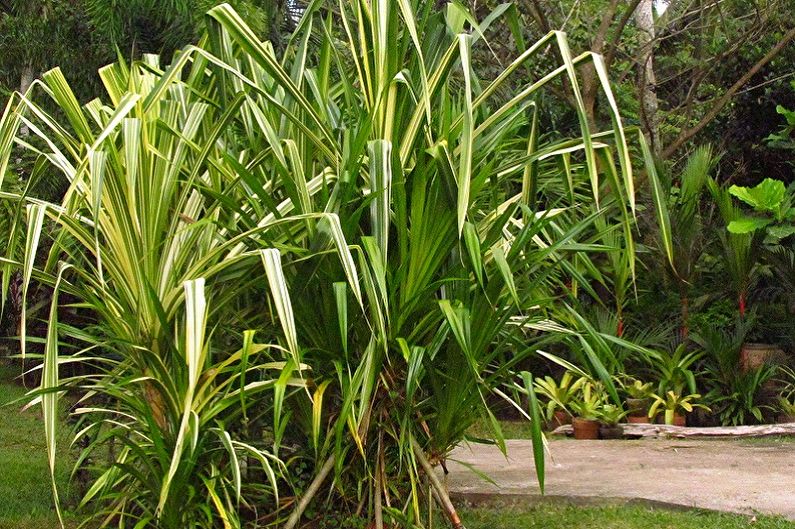
Pandanus Hiding
The culture is a leafy bush with a branched stem. The height of the plant often reaches 4 m, so it should be settled on the territory of the house area - it will be cramped in the room. Of particular interest is the structure of the pandanus - a feature is that, due to the presence of aerial roots, the base is located at a height. The spreading crown of the plant is represented by rather rigid elastic leaves of a plain green color, has a pyramidal shape.
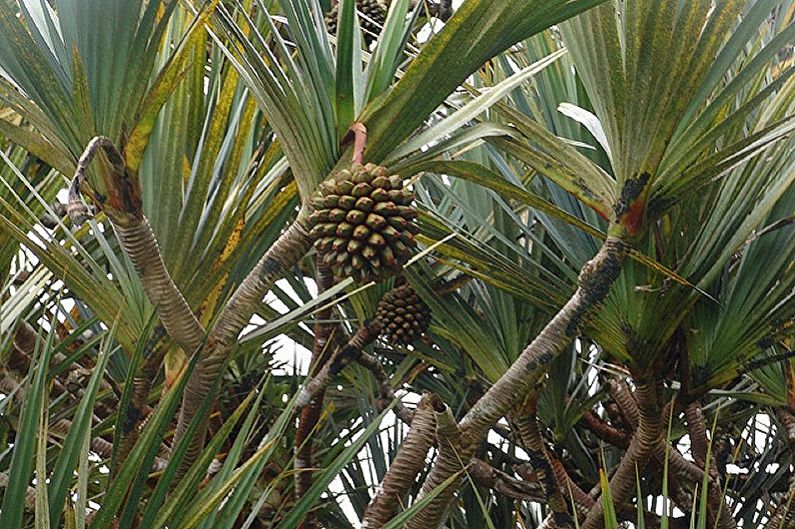
Proper Pandanus Care
Pandanus refers to undemanding species and may well grow without human intervention. However, such content will affect the decorative indicators of home culture. Observing simple rules, you can achieve the best aesthetic indicators and avoid diseases.
Lighting
Pandanus at home needs as much light as possible. It is completely not afraid of direct sunlight and prefers well-lit areas. In room conditions, flowerpots are placed near windows facing the east and west sides. The plant loves long daylight hours, so in winter, when it decreases, you need to take care of organizing artificial exposure for 5-7 hours.
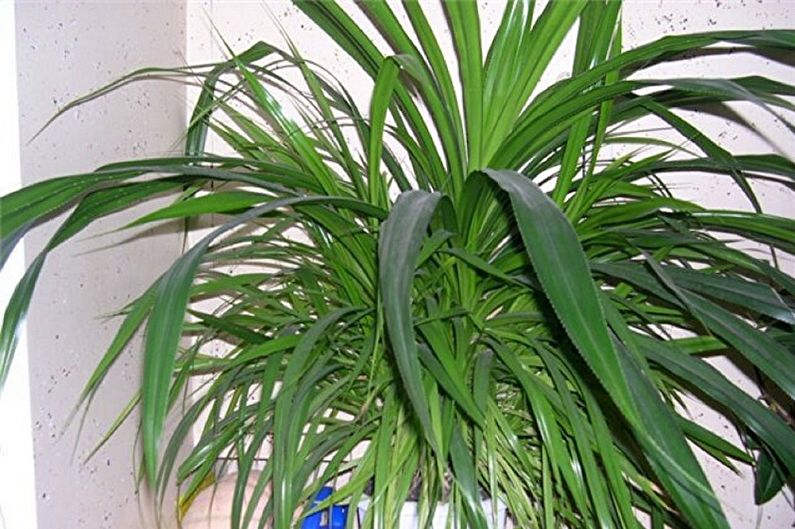
Temperature
The microclimate of the living room, from the point of view of the temperature regime, is ideally suited to the pandanus, since it feels most comfortable at a temperature of + 22 ... + 24 ° C.In the winter period, it is necessary to ensure that the thermometer column in the room does not fall below + 15C - cooling can become fatal. In summer, the pandanus is taken out to the balcony or terrace, while creating protection against possible windy streams and cool drafts.
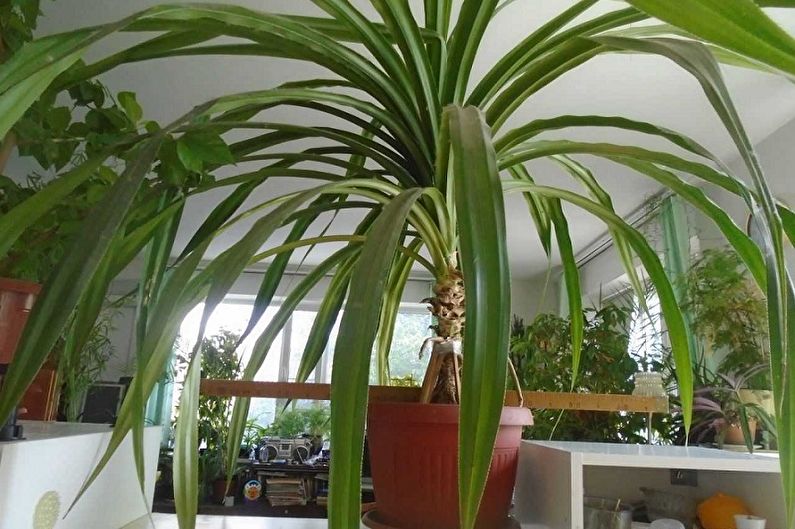

Humidity
The plant needs moderate hydration. From time to time he is given water procedures in the form of bathing and spraying. After such procedures, it is necessary to ensure that the sinuses are not filled with water, which often leads to rot. Pandanus leaves can be wiped with a damp cloth, but during operation you need to be extremely careful, do not forget about the spikes.
You can increase the humidity level by placing it on a pallet with moist expanded clay (moss, pebbles). The danger is overmoistened soil, in which the disease of rotting of the root system can develop. Even at the planting stage, it is necessary to equip the pot with a drainage layer that helps to avoid stagnation of water.
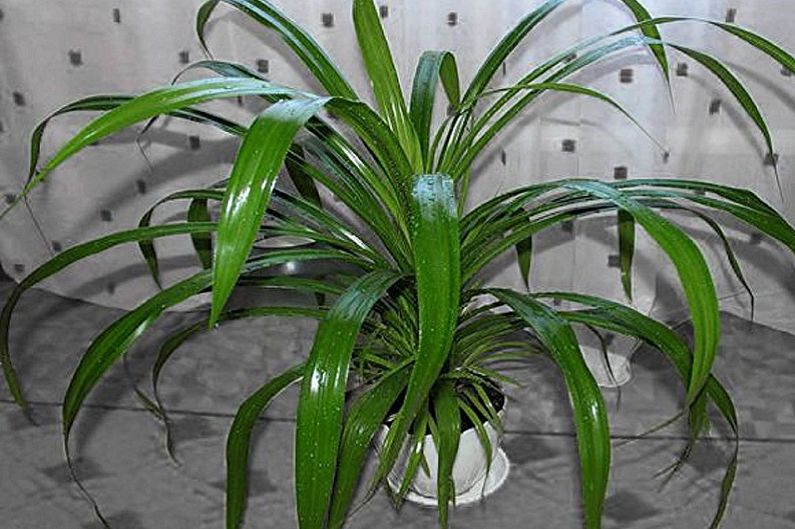
Watering
To understand how often a pandanus needs a drink, it is necessary to monitor the condition of the soil - it should be no more than half dried. In the warm season, watering is plentiful (once every two days), and with cooling it is gradually reduced to once every four days. A significant role for the health of the culture is played by the state of water - it must be settled (filtered) and warm, not lower than + 25 ° C.
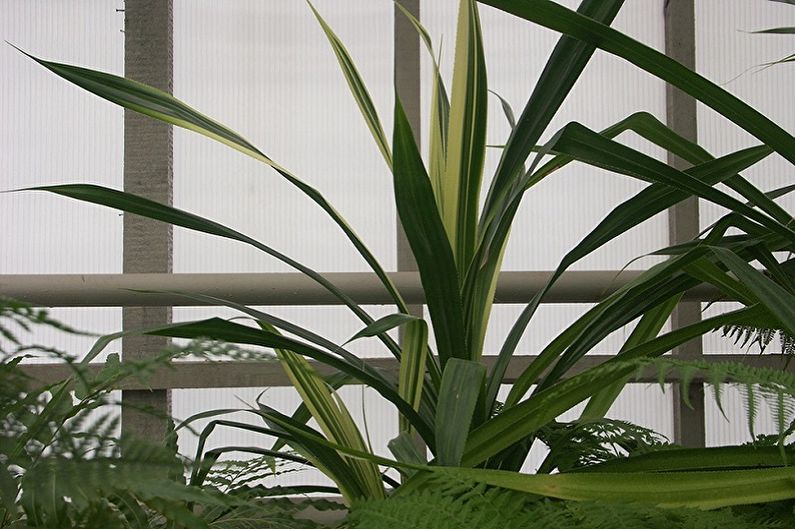
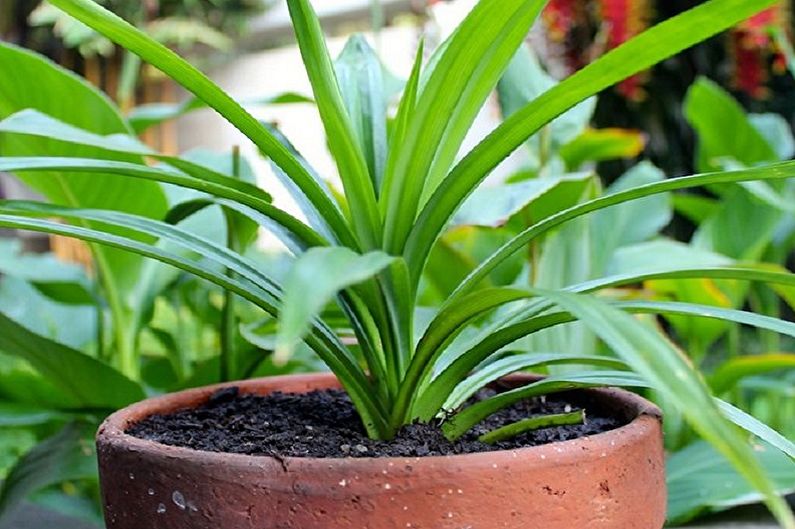
Fertilizers and fertilizing
In addition to the fact that when planting a pandanus, the container is filled with nutritious soil, the need for top dressing remains relevant throughout the life of the culture. In warm periods, fertilizers must be applied twice a month, and with cooling, the regularity is reduced to one month of feeding. You can use liquid universal fertilizers designed for this kind of crop.
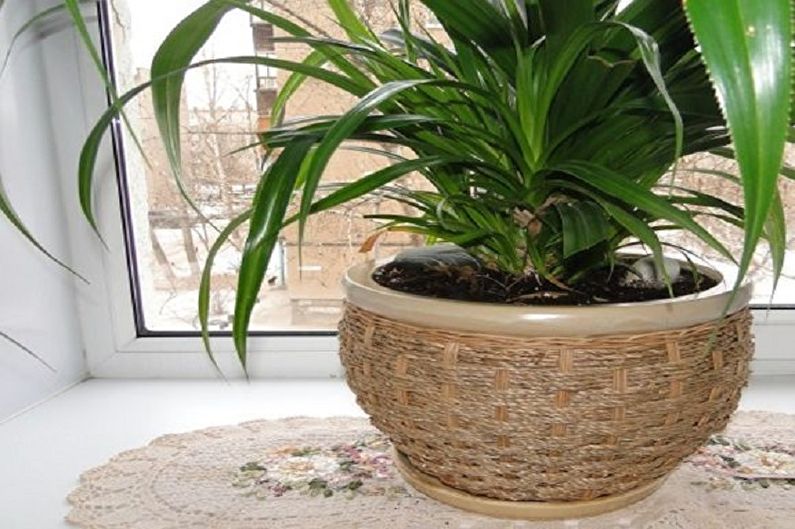
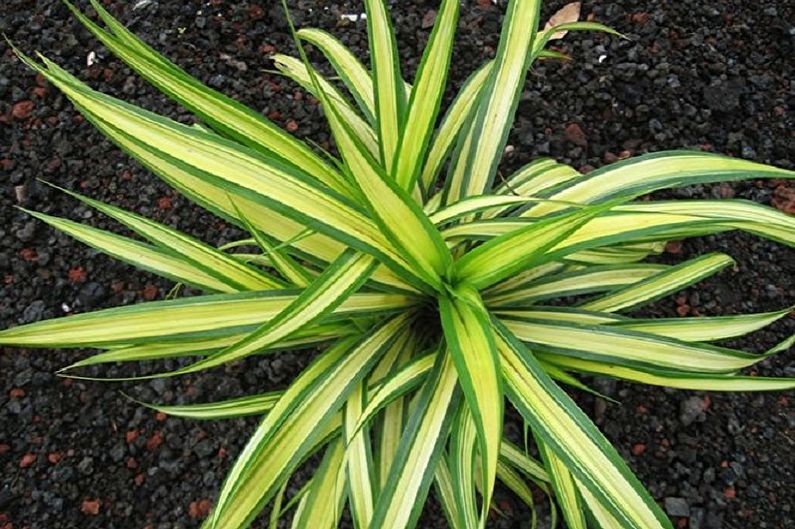
Diseases and Pests
Pandanus is highly immune to diseases. The main cause of the ailments that can overtake him is improper care or inappropriate conditions of detention. Due to staying in conditions of too dry air (often this happens during the heating season), the culture shows shrinkage of the tips of the leaves, the acquisition of a brown tint.
The same symptoms may indicate a lack of nutrients. The loss of variegation of leaves and a slowdown in their growth indicates insufficient lighting. A sharp brightening of the foliage is a signal that hard water is being watered. Having found such signs, it is necessary to restore proper care of the plant.
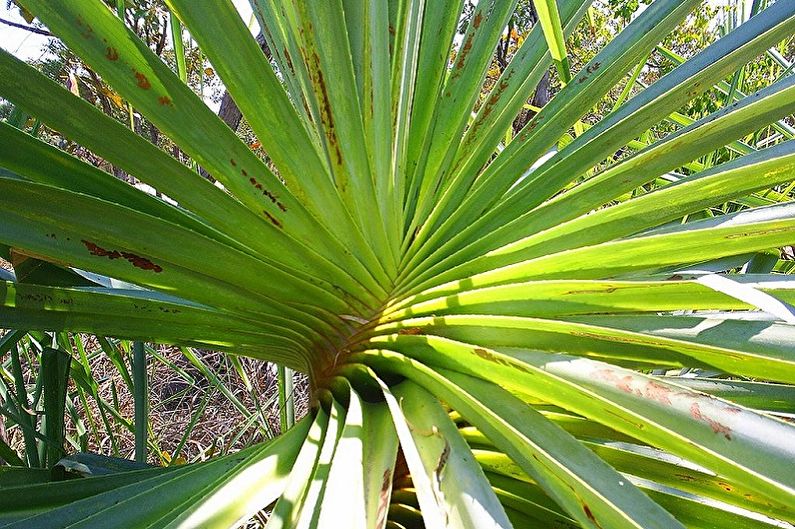
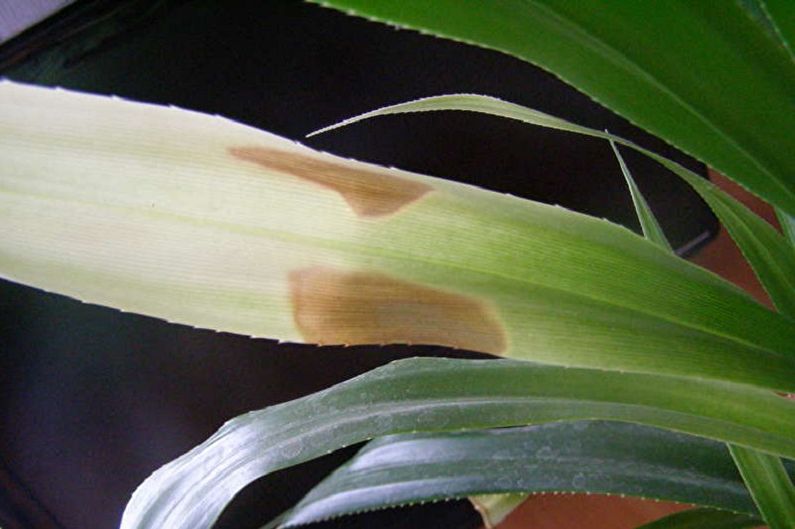
How to transplant pandanus
Pandanus need to be transplanted periodically, but, given the fact that indoor “residents” have rather vulnerable roots, changing their place of residence should not be carried away. The transplantation method is carried out when the root is covered with an earthen lump.
Before starting the process, it is necessary to tie the foliage into a bundle so as not to injure your hands on numerous spikes. It is important to choose a new tank, which will be slightly larger than the previous in all respects. About a third of the pot is filled with a drainage layer, on which light soil with sand, humus and deciduous soil is laid.
It is necessary to transplant the pandanus very carefully, without damaging the aerial roots, which, when planting, should remain visible on the surface. At the end of the process, the soil is slightly tamped and moistened abundantly.

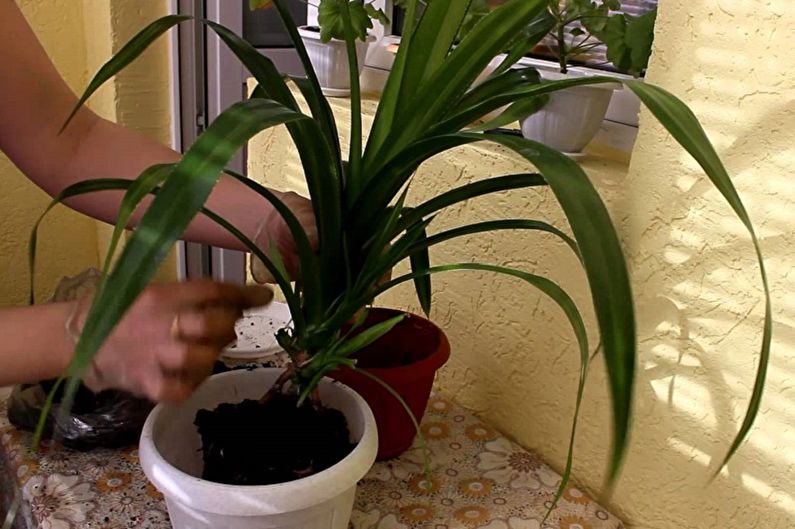
Propagation at home
There are several ways to breed new representatives of the pandanus genus at home, taking seeds or various cuttings for the starting material. Also, when transplanting an adult plant, it can simply be divided.
Pandanus seed propagation
Pandanus seeds do not need to be pre-treated before sowing. It is necessary to prepare a shallow container and fill it with soil from sand and peat. The sown bed is necessarily covered with a film, creating a greenhouse, and set in a warm place.Favorable temperature for sowing ripening is about + 25C. Subject to this condition, the first sprouts of pandanus can be seen in two weeks. They will need regular watering and ventilation until leaflets appear. A dive at home is carried out if the seedling has three full leaves.
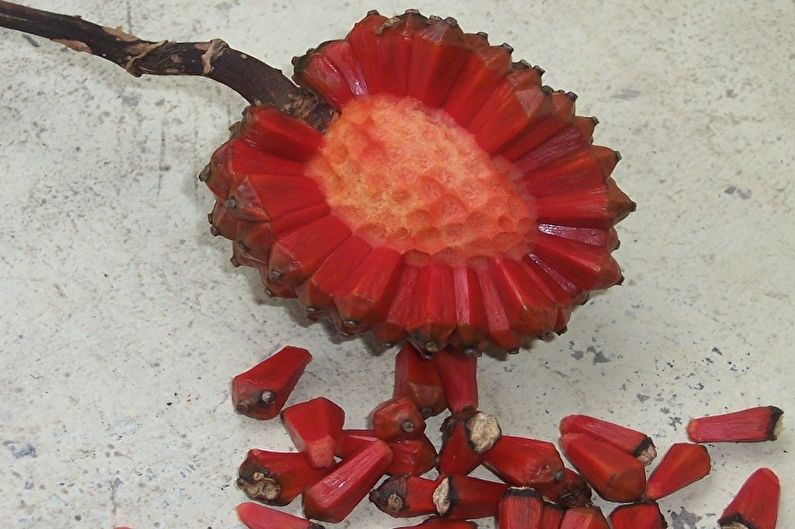
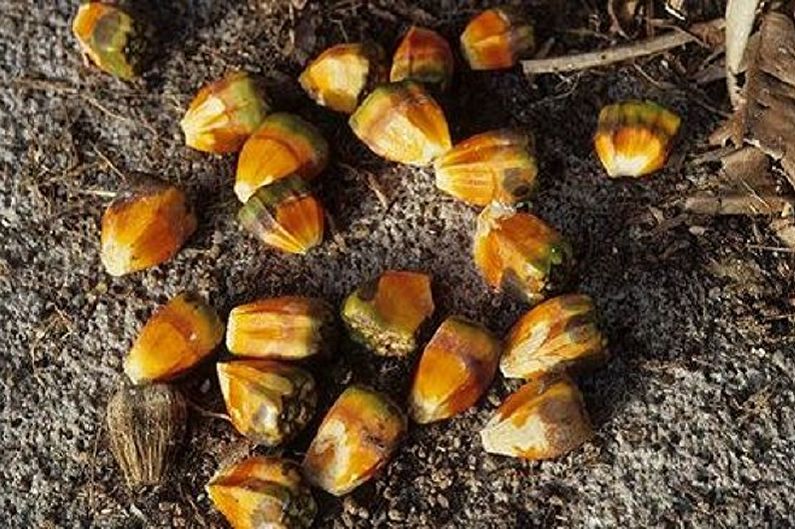
Pandanus propagation by cuttings
This method provides two options for obtaining planting material - you can take apical cuttings or stem. The apical, 18–20 cm long, are cut from the lateral thin branches of the plant. All places of cuts must be treated with charcoal.
The material sits in the prepared soil from sand and peat and is covered with polyethylene. The whole rooting process (about two months) should take place at an air temperature of at least + 25 ° C. To speed up the time of root formation, you can treat the pandanus cuttings with special stimulating compounds before planting.
The stem cuttings are cut from the trunk and treated with root. The following is a similar planting procedure for rooting, as in the case of apical.

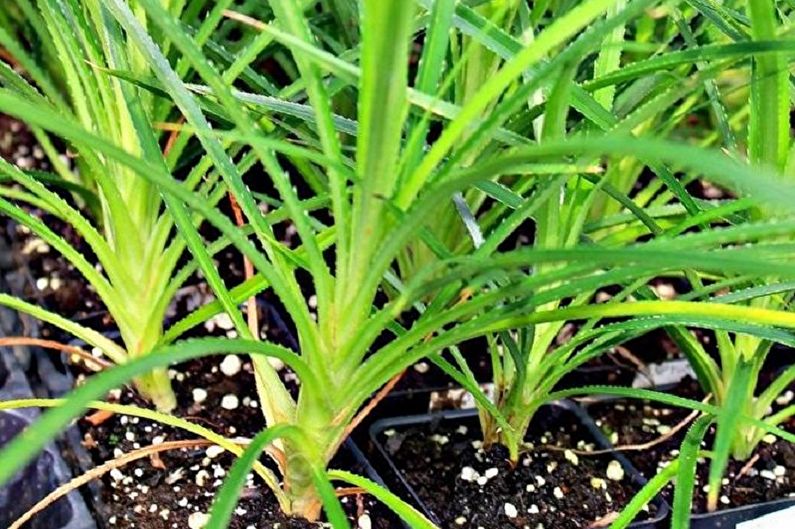
Breeding Pandanus
Adult pandanus can be split during a transplant. To do this, carefully remove it from the pot, shake it off the ground and make a cut. The resulting segments are seated in separate containers with fresh substrate. This separation is carried out in the spring.

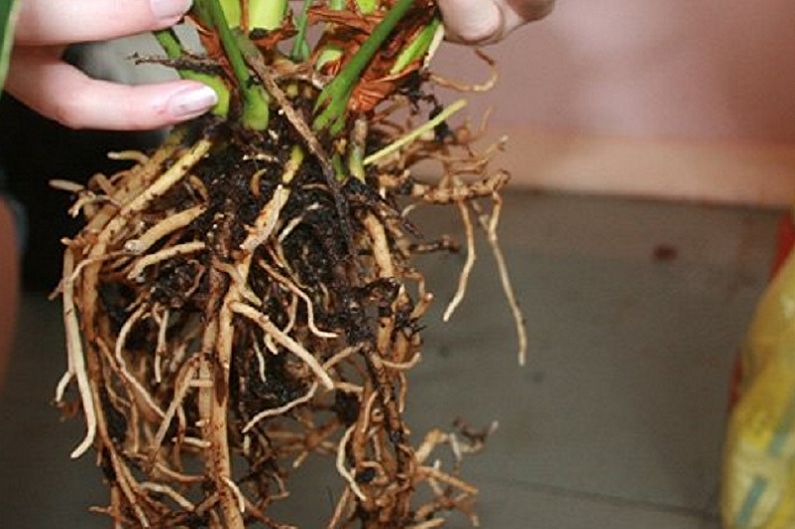
Pandanus - photo
Pandanus is a magnificent palm tree that can decorate the interiors of halls and conservatories. Having significant dimensions, it looks great in single landings. The plant is also able to become a bright accent of landscape design, delighting everyone with a unique tropical appearance, as evidenced by our photo selection. Enjoy watching!
